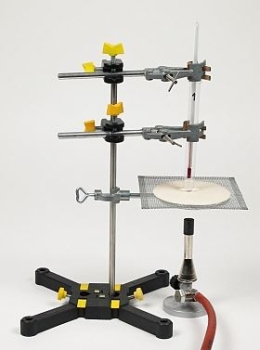Principle
Cetyl alcohol is (as palmitic acid ester) the major component of spermaceti. Insect waxes contain even longer chain alcohols. Myricyl alcohol, for example, is a mixture of C30H61OH to C34H69OH. With these alcohols, the unpolar character of the alkyl chain is predominant over the polarity of the hydroxyl group, so that these alcohols resemble the paraffins more than the alcohols in their properties (flammability, intermolecular forces etc.).
As some of the parts of the experiment are quite time-consuming, work-sharing can be used when there is a sufficient number of work groups. Either various alcohols can be examined for one property, or one alcohol is examined for various properties.
Advanced courses: This experiment can be used for the discussion of the strength of the different intermolecular forces. It can also be used for the advanced discussion of solubilities in the context of tensides.
Learning objectives
- The substances which belong to the homologous series of the alcohols exhibit common properties
- These properties change continuously with increasing number of carbon atoms.
Benefits
- Easy teaching and efficient learning by using interactive experimentation PHYWE-Software
- Experiment is part of a complete solution set with experiments for the topic Organic Chemistry matched with international curriculum: all topics are covered



